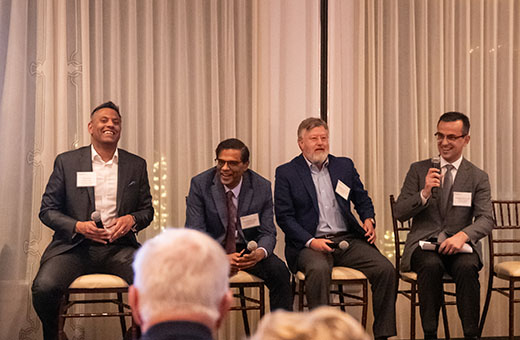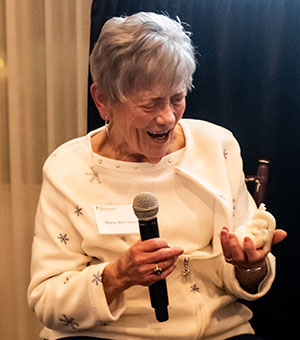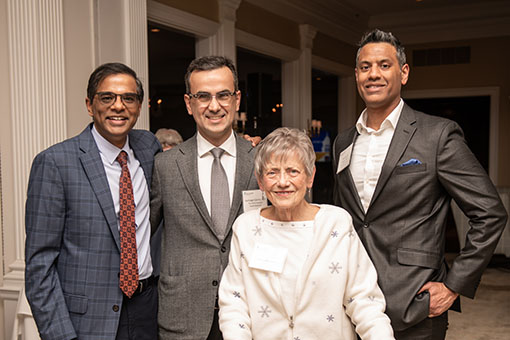Structural Heart Disease Fellowship Curriculum
During the year of structural heart disease training, fellows are expected to master the risks, techniques and indications of structural heart disease interventions. They will be expected to develop the judgment and experience necessary to select patients and function as independent operators during interventional procedures in patients with a wide variety of structural heart diseases from young adults with complex congenital heart disease to elderly patients with advanced forms of multivalvular heart disease.
A major component of the fellowship will involve the performance of procedures in the hybrid operating and cardiac catheterization laboratories. The Christ Hospital has six state-of-the-art high-resolution digital fluoroscopy cardiac catheterization rooms and a hybrid operating room. A wide variety of diagnostic interventional procedures are performed in these laboratories including over 1500 coronary and peripheral interventions and over 600 structural heart procedures.
Structural Heart Procedures
Balloon Aortic Valvuloplasty (BAV)
Transcatheter Aortic valve Replacement (TAVR)
Bioprosthetic valve fracture (BVF)
Transcatheter edge to edge mitral valve repair (TEER)
Left atrial appendage occlusion (LAAO)
Transcatheter mitral valve replacement (TMVR)
Alcohol septal ablation
Transcatheter tricuspid valve repair (TTVr)
Transcatheter tricuspid valve replacement (TTVR)
PFO/ASD closure
VSD closure
PDA closure
Assessment of Fontan circulation
Transcatheter Pulmonary Valve Replacement (TPVR)
Transcatheter treatment of coarctation of the Aorta
Hemodynamic evaluation of complex valvular heart disease
Interventional Heart Failure: Interatrial shunting and coronary sinus interventions
Complication Management
Mechanical Circulatory Support
Curriculum
During the year of structural heart disease training, fellows will participate in multiple education activities including lectures, grand rounds and morbidity and mortality reports. The following topics will be covered during the academic year:
Aortic Stenosis: Disease prevalence, pathophysiology, diagnosis, and surgical and interventional management with focus on procedural technique, complication management and lifetime management.
Aortic Regurgitation: Disease prevalence, pathophysiology, diagnosis, and surgical and interventional management with focus on emerging interventional technologies.
Mitral Regurgitation: Disease prevalence, pathophysiology, diagnosis, and surgical and interventional management. Primary versus secondary mitral regurgitation. Focus on procedural technique, complication management and lifetime management of TEER. Indications and current status of TMVR.
Mitral Stenosis: Disease prevalence, pathophysiology, diagnosis, and surgical and interventional management. Percutaneous mitral balloon valvuloplasty indications, procedural technique and complications.
Tricuspid Regurgitation: Disease prevalence, pathophysiology, diagnosis, and surgical and interventional management. Focus on transcatheter repair and replacement, and advanced cardiac imaging including intracardiac echocardiography.
Pulmonary Regurgitation: Management of the adult patient with complex congenital heart disease. Focus on Tetralogy of Fallot and congenital pulmonary stenosis. Role of interventional therapies with focus on patient selection, procedural planning and lifetime management of TPVR.
Alcohol Septal Ablation: Procedural indications (HOCM, pre-TMVR) technique, complications and long-term follow-up.
Invasive Hemodynamic Evaluation: Assessment of valvular heart disease in the cardiac catheterization laboratory. Principles, indications and optimal procedural practices.
Left Atrial Appendage Occlusion: Procedural indications, planning and device sizing. Focus on device selection, procedural technique and surveillance.
Coronary Sinus Interventions: Focus on interventional devices to coronary artery disease, heart failure and mitral regurgitation.
Interventional Heart Failure: Shunt devices. Patient selection, screening and procedural technique.
Advanced Cardiac Imaging: Cardiac Tomography (CT) and Transesophageal echocardiography (TEE) are integral parts of structural heart interventions both for procedural planning and execution. Focus on advanced cardiac imaging in procedural planning of structural heart procedures including CT for TAVR, TMVR, TTVR, LAAO and TPVR. TEE and ICE for LAAO, mitral and tricuspid intervention.
Paravalvular Leak Closure: Procedural indication, planning and technique. Antegrade and retrograde approaches. Role of advanced imaging.
Complication Management: Recognition and management of most common complications of structural heart interventions. Peripheral stenting, device retrieval, snaring of embolized devices, vascular plugs and coils.
Adult Congenital Heart Disease: Principles and management of complex adult congenital heart disease patients. Hemodynamic assessment of Fontan circulation, transcatheter pulmonary balloon valvuloplasty and replacement, ASD, PDA and VSD closure.
Valve Awareness Event 2024
We celebrated valve awareness month 2024 honoring Mary Ann Henry, a patient who received a transcatheter tricuspid valve replacement procedure at The Christ Hospital Network. The timing of the event coincided with US FDA regulatory approval of transcatheter therapies for tricuspid regurgitation. A multidisciplinary team of experts from various disciplines provided their perspective on the treatment of tricuspid valve regurgitation. This included the panel pictured seated below from left to right of Sitaramesh Emani, MD; Puvi Seshiah, MD; J. Michael Smith, MD, and Santiago Garcia, MD. We are incredibly excited about the opportunities ahead.


